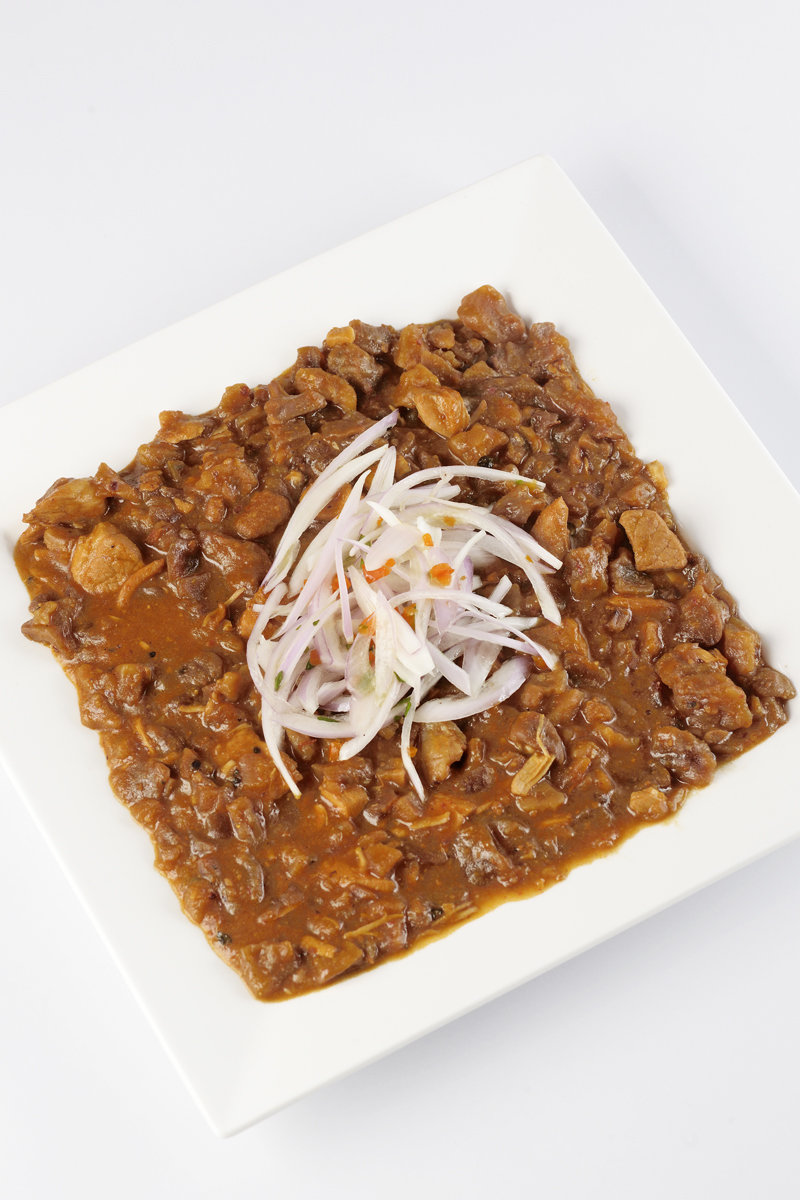
It’s no wonder this quintessential Peruvian pork stew has become so popular in the last few decades. The tasty stew made with traditional dried potato, diced pork and ground peanuts is as delicious as it is filling and versatile. And it’s an easy recipe anyone can follow. What’s the story behind carapulcra? There’s a fascinating tale to tell your dinner guests as you serve up steaming plates of this classic Peruvian stew. Let’s retrace the route this dish took from its roots to its current status and then prepare the carapulcra recipe ourselves! Then we’ll get to the juicy recipe.
Origins
Often recognized the Peruvian dish with the most interesting background story, Carapulcra is the result of a blend of preparation methods and ingredients from different places and peoples. The name itself gives us a hint of its indigenous origins. Qala phurk’a means “stew made with hot stones” in both the Aymara and Quechua indigenous languages from the Andean highlands. The preparation is attributed to the Aimara people. It’s though that the original pre-Columbian recipe was stew made with llama or alpaca meat, diced pieces of dried potato and some local herbs and spices for seasoning. All ingredients ended up in a clay cooking pot on top of special pre-heated cooking stones.
The potato is the undisputed staple food in Peru, appearing again and again in different variations.
However, the potato in carapulcra is no ordinary tuber. Dried potato, or as it’s known in Spanish: papa seca, is produced by an ancient process used by indigenous people from the Andes for hundreds of years. Local people dice boiled potato and lay it out in the harsh Andean sun to dry. This serves as a preservation method, greatly increasing the longevity of potatoes. It’s clear how important this process might be in a rural setting like the Andes where refrigerators are unheard of. Papa seca is still popular in this and several other Peruvian dishes because of its pleasant flavor and texture. Quite different from freshly cooked potatoes.
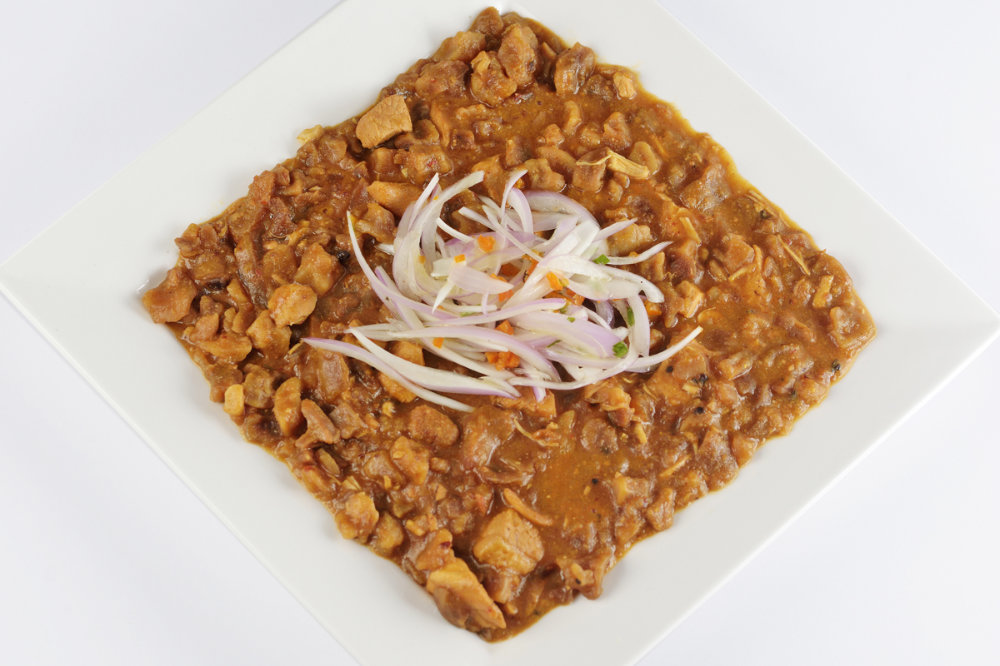
Carapulcra continues to evolve
Carapulcra is a prime example of a Peruvian dish where traditions from different latitudes converge. The dish evolved from its indigenous origins when Spanish conquistadors and African slaves influenced the ingredients and preparation methods. Alpaca and llama meat made way for pork or chicken (sometimes both), meats brought to Peru by the Spanish. African slaves added the now indispensable ingredient of ground peanuts. Other essential ingredients that made their way into the dish are garlic, cumin and dried ají panca chilli pepper, the mildest of the arsenal of Peruvian pepper that plays an important part with its characteristically smoky, warm flavor.
The cities of Ica and Chincha, where many slave workers toiled on cotton plantations, are hubs of the small but important African diaspora in Peru. Carapulcra is largely recognized as the most emblematic dish of the city of Chincha. When ordering carapulcra in Chincha, the pork stew will invariably be accompanied by sopa seca, a spaghetti dish from the region that is cooked dry in its own seasoning. In 2017, a group of Chinchanos supersized by cooked up the biggest carapulcra stew ever. 650 kilos of potatoes fed 3500 people.
Carapulcra was looked down upon by certain higher classes for decades but is now a dish loved by people from across the entire socioeconomic spectrum of Peruvian society. So much so, that the popular Mistura gastronomy fair designated the 10th of February as the National Carapulcra Day. The motive was the celebration of the fusion of Andean, African and Spanish influences in Peruvian cuisine.
Of course, any day is a good day to make carapulcra. So let’s move on to the carapulcra recipe!
Carapulcra Recipe: Peruvian Pork Stew With Peanuts And Potatoes
Ingredients
- 1 pound dried potato
- 2/3 pound pork loin diced
- 2/3 pound chicken breast diced
- 1 ½ cups chopped red onion
- 1 tablespoon fresh garlic paste
- 3/4 cup fresh ají panca chilli pepper paste
- ½ teaspoon cumin
- 3 cups chicken stock
- 5 ounces peanuts roasted roughly ground
- 3 tablespoons vegetable oil
- ½ teaspoon salt
- ½ teaspoon ground black pepper
- ½ teaspoon ground cumin
Instructions
- Gather ingredients and make sure that step 2 and 3 below are completed the day before preparing the stew in order to soak the potatoes appropriately.
- (Day before preparing the stew) Roast the papa seca (freeze-dried potato) over low heat for a few minutes without adding any oil, and let it cool.
- Transfer the papa seca to a large metal or glass bowl, cover it with double its volume in cold water and leave to soak overnight at room temperature.
- (Day of preparing the stew) Sear the diced chicken and pork in a skillet or pot over a medium heat for a few minutes.
- Add the onion, ají panca chilli pepper, salt, black pepper and ground cumin and cook for a few more minutes.
- Strain the papa seca and add along with the chicken stock, leaving it to simmer for an hour over a low heat without the lid, stirring every 5 minutes.
- After an hour (or when the papa seca is fully cooked), add the ground peanuts and let it stew for another 10 minutes. At this point you can also check if it needs more salt and add it if necessary.
- Serve hot with either zarza criolla onion salad (as shown in the photos), boiled cassava or white rice.
- (If you really want to give your carapulcra an even more traditional Chinchano feel, make sure to put on some Afro-Peruvian festejo music in the background!)
Notes
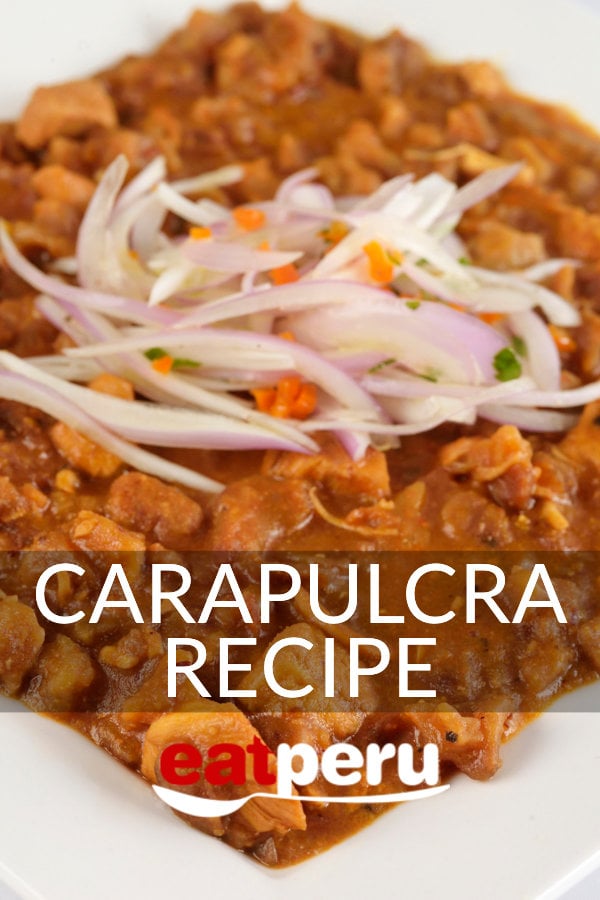

Peruvian foodie. I’ve been writing about the food of Peru for over 10 years. Read more about the Eat Peru team here

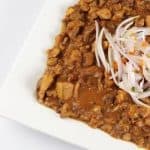
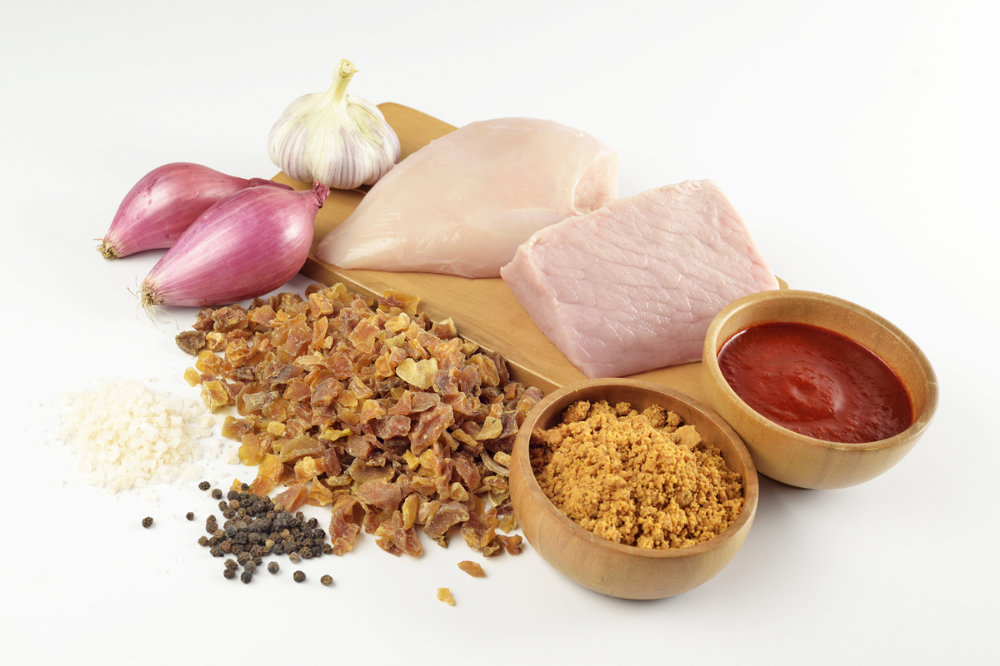
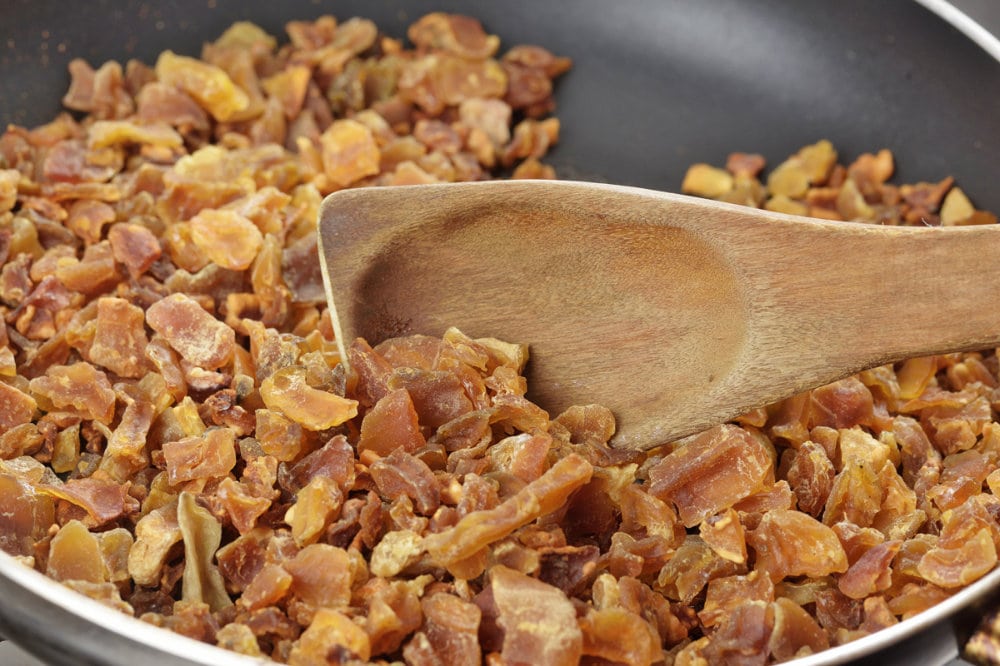
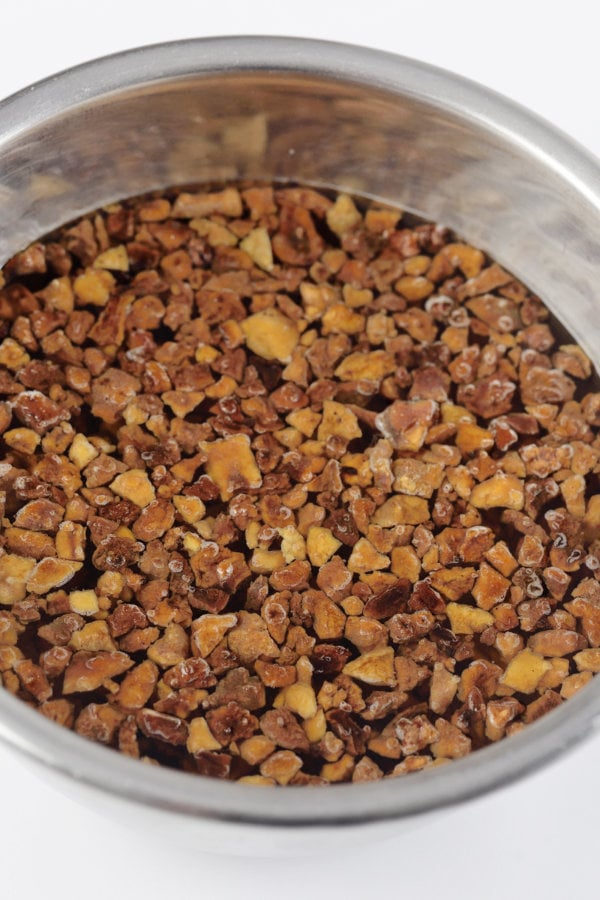
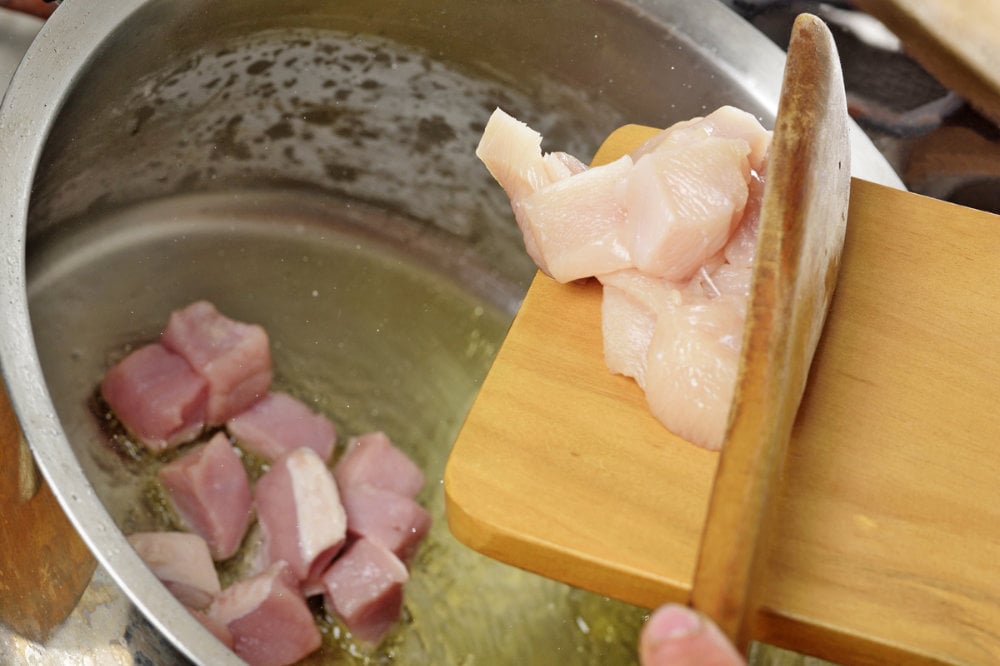
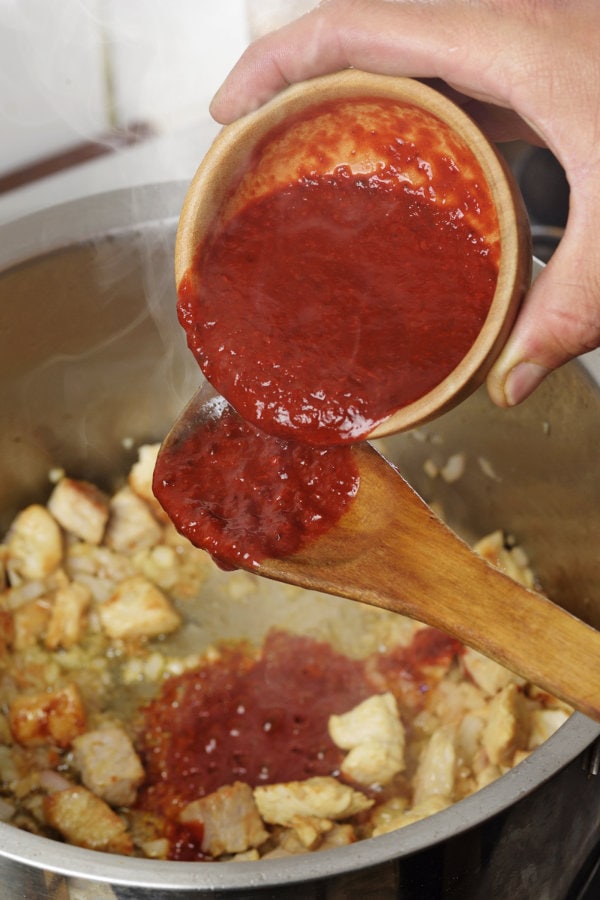
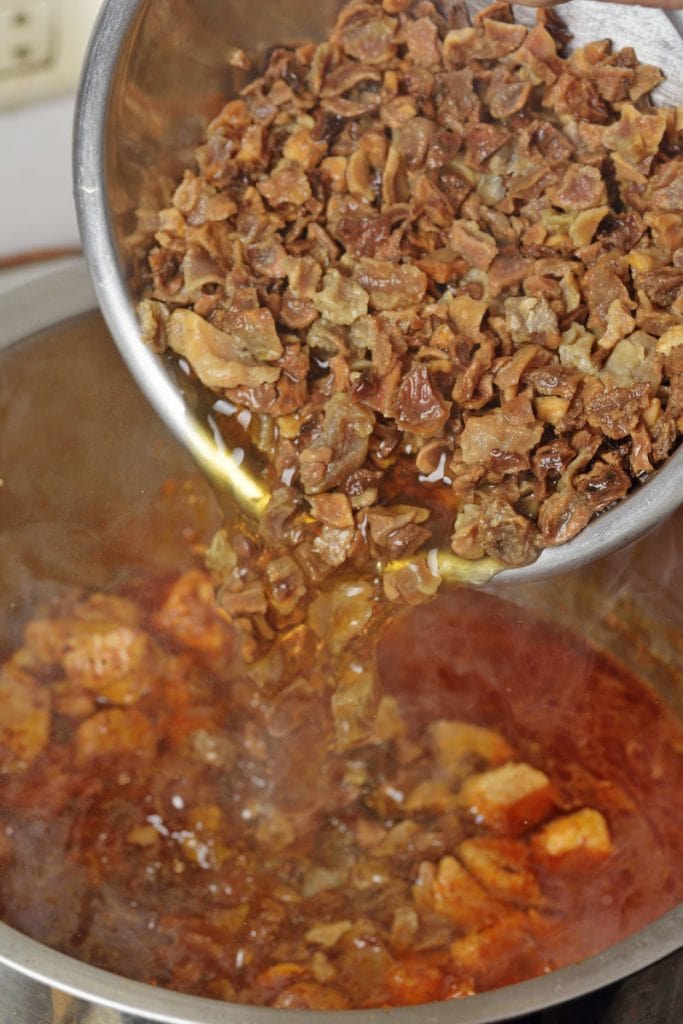
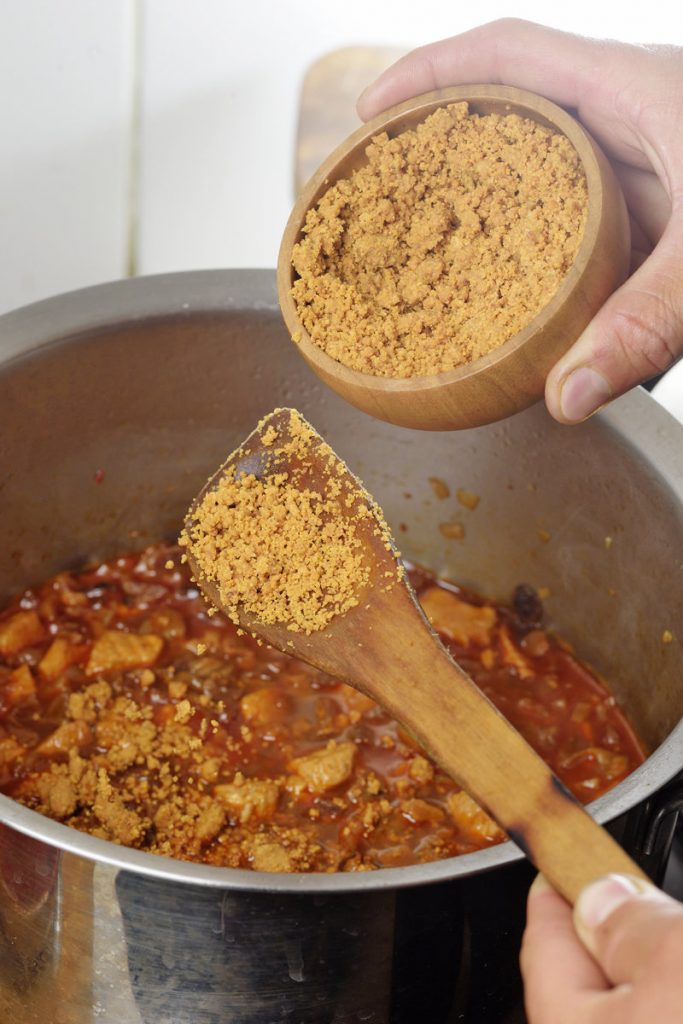
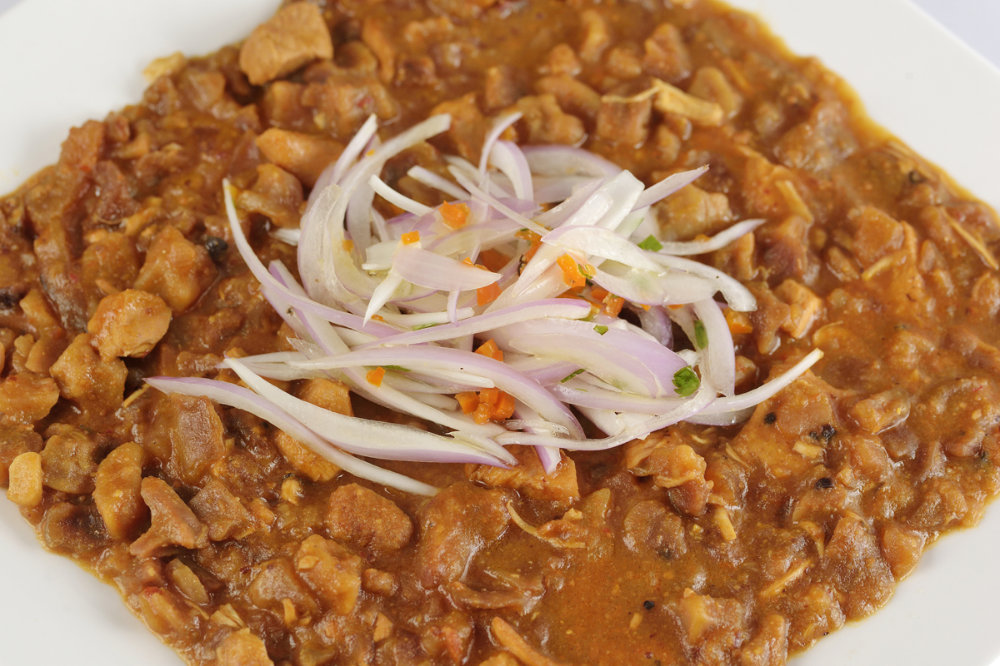
A peruvian
Secret ingredient is clove, as well.
DiegoC
its right T.Davis, usually you take the Panca paste with spoons that a cups , like with 4 tablespoons is fine, this panca chili paste is strong flavor, and strong color too.
America Lopez
Nice and easy bro make.
Roberta
Where do you get dried potatoes, i have never come across them
Eat Peru
You can sometimes find them in local ethnic food stores but they are available on Amazon
Karen
I’m going to try this. The dried potatoes are available on labodegaperuana.com
Estrella Lefler
me encanta